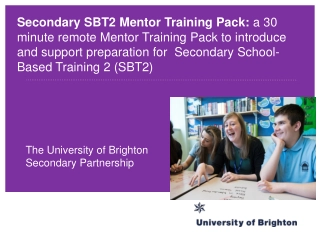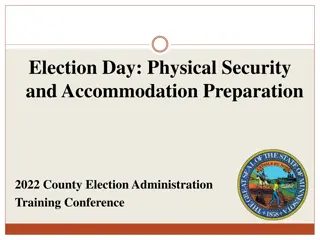Effective Session Preparation and Applied Training Methods
Prepare sessions based on skill acquisition plans, minimize distractions, and use appropriate reinforcers for effective therapy sessions. Implement Discrete Trial Training (DTT) procedures involving components like Discriminative Stimulus (SD) and Response (R) for instructional teaching.
Download Presentation

Please find below an Image/Link to download the presentation.
The content on the website is provided AS IS for your information and personal use only. It may not be sold, licensed, or shared on other websites without obtaining consent from the author.If you encounter any issues during the download, it is possible that the publisher has removed the file from their server.
You are allowed to download the files provided on this website for personal or commercial use, subject to the condition that they are used lawfully. All files are the property of their respective owners.
The content on the website is provided AS IS for your information and personal use only. It may not be sold, licensed, or shared on other websites without obtaining consent from the author.
E N D
Presentation Transcript
Objective: Prepare the sessions as required by the skill acquisition plan
Apart from identifying the components of a program, there are other ways of preparing for your session. Consider distractions in the environment e.g. other people, noise, items/activities etc. Remove unnecessary materials from the table. Avoid free access to reinforcers to decrease satiation effects.
Below is a scenario. Identify some things the therapist should consider to improve the effectiveness of the session. Janice has just arrived for her session with Bobby. Bobby s mother mentions that Bobby has been playing outside with his dog (a preferred activity), but hasn t listened to his favourite songs yet (another preferred activity).
Avoid trying to use playing outside as a potential reinforcer for the next hour or so. Use listening to favourite songs as a potential reinforcer.
Objective: Implement Discrete Trial Training (DTT) procedures
Discrete Trial Training (DTT) is one type of instructional teaching method involving: Repeated presentations of the same SD (mass trial -MT) OR Rotating between different SDs in a random order (random rotation -RR) Discrete trials consist of four components: 1. The Discriminative Stimulus (SD) 2. The Response (R) 3. The Consequence 4. The Inter-Trial Interval (ITI)
The Discriminative Stimulus (SD) The SD may be in the form of an instruction or cue initially provided. It must be clear and concise, and only presented once you have the learner s attention. Avoid using the learner s name with the SD. Do not change the SD unless advised. Only repeat an SD after a consequence for the learner s response has been provided.
The Response (R) The response is the learner s behaviour immediately following the SD. It will be clearly defined by the program supervisor. Responses are correct, incorrect, prompted, or a no response. A correct response is reinforced. Incorrect and no responses are not. A prompted response may or may not be reinforced depending on the program outline. The learner must generally respond within 3 seconds after the SD is presented, unless advised differently.
The Consequence The consequence is what happens following a response or behaviour. In DTT, the consequence is usually either reinforcement or an error correction procedure. Consequences should be delivered immediately following the response Use animated praise for correct responses and neutral tones for incorrect or no responses.
The Inter-Trial Interval (ITI) The ITI is the time between the end of one trial and the beginning of the next trial. This interval is usually between 3-5 seconds. A short ITI increases the likelihood that the learner will form a contingency between the SD, response and consequence.
ASR 23. In DTT, the ITI is at least 10 seconds long. True or false? True False a. b.
ASR 24. Which component of DTT indicates to the learner that their response is correct or incorrect? Discriminative stimulus a. Response b. Consequence c.























